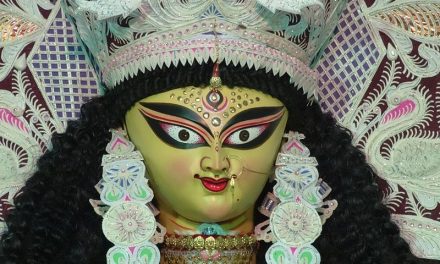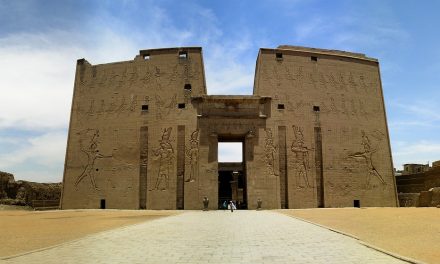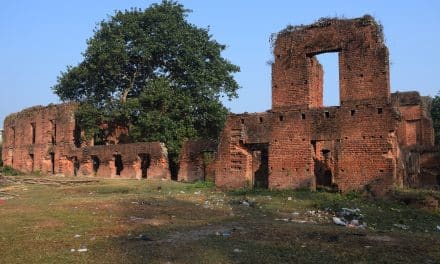To sketch present Kolkata, we have to fix our eyes when it was formerly Calcutta, covered with chronicles of history. India, our beloved country, had been ruled for centuries by the invaders. Among them, Shaks, Hunas, Pathans, Mughals, Portuguese and English are few names. Formerly Calcutta was not able to keep itself isolated from the rest of the country. Hence, it had to digest their oppressions periodically.
It was that time when the Mughals kept the heap of the ruling power of this country in their hands; a representative of the British East India Company named Job Charnock cast the anchor of his ship on 24th August 1690 somewhere between present-day Shovabazar Ghat and Ahiritola Ghat. On heresy, Job Charnock roamed various hamlets surrounding this area. On 24th August 1686, he appeared in the ‘Sutanuti’ hamlet (derived from the word ‘Suta’ meaning yarn and ‘Nuti’ meaning bundle).
During the British period, there was a known popular textile workshop and threads market famed as ‘Sutanuti Bazar’ at Sutanuti. Perhaps both of these helped to follow the name of the place ‘Sutanuti’. At last, he favoured this hamlet as the settlement, but his colleagues disagreed with him. But he was satisfied with the natural protections of Sutanuti, and at last, he was able to make his higher officials convinced to built a factory there. There was a creek in the north that demarked the border of the settlement of Chitpore and the beginning of the village of Sutanuti. In contrast, the Hatkhola locality of present Kolkata is the most exact location of Sutanuti. Sutanuti was well protected by the river Hooghly(the part of the Ganges) on the west and by swampy forest on the south and on the east.
Apart from Sutanuti, there were two other villages, Gobindapur and Kalikata. Those three villages comprised the city of formerly Calcutta. Among those three, ‘Kalikata’ was less important than the rest of the two because old maps like Thomas Bowrey’s of 1687 and George Herron’s of 1690 did not depict ‘Kalikata’ between the two places mentioned above.
However, the British East India Company bought those three villages from the local landlord, i.e. from Sabarna Roy Chowdhury family of Barisha and the Mughal emperor, Aurangzeb, allowed them to carry on their trades in exchange for rupees 3,000 per annum. Along with three villages consisting of the city, four more places acted as ancillaries for the city, and those were Chitpur, Salkia, Kalighat and Betor. Of those four, Betor was located around where Shibpur presently is. It was an important trading centre, vanished in the seventeenth century. The village of Kalikata is situated along the river Hooghly starting from the current Jorabagan and extending to present-day ‘Chandpal Ghat’ near the business district of B.B.D. Bag. Kalikata did not have any locals, so it was too easy for the British East India Company to acquire that site.
The first ‘Fort William’ was erected here in the year 1696 at Dalhousie Square, in the vicinity of present-day G.P.O.(General Post Office) with Sutanuti in the north and Gobindapur the south and was completed in the year 1698.
The village of Gobindapur was also along the river Hooghly where the present Fort William stands now. After the ‘Battle of Plassey’ in 1756, a more well-protected ‘Fort William’ was established here in 1758 and was completed in 1773, keeping the name ‘Kalikata’ unchanged. And the village was extended to Adi Ganga(Tolly’s Nullah). It was circumambient with dense forests inhabited by wild animals like tigers, presently familiar with Maidan. This way, Gobindapur became the British Head Quarter, Kalikata became their business centre and Sutanuti. In this old town, the natives resided.
The eastern boundary demarks the settlements until the Chitpur Road(the oldest road of Calcutta), popularly known as ‘Rabindra Sarani’, ran into Bentinck Street. Along this Chitpur Road, you may meet your quench of knowledge in that way why the this ‘City of Joy has the epithet of the city of palaces. This epithet is adorned with the ‘Marble Palace’, a palatial 19th-century mansion in north Calcutta, famous for its marble walls, floors and sculptures, 19th-century by Raja Rajendra Mullick, a wealthy Bengali merchant.
Next to Shovabazar Rajbari, a masonry of Hindu, Moorish and colonial traditions, built by Raja Naba Krishna Deb, Lord Clive’s ‘Munshi, probably in the year 1757(Main building Mandap in1830s. Raja Naba Krishna Deb was one of the first eminent residents of the then Calcutta who was bolded to celebrate Durga Puja(the most covetable festival of the Bengali Hindus) 1757 with grandeur. The next attraction is about ‘Jorasanko Thakurbari’, birth and dwelling place of great world-renowned, adorable poet ‘Rabindranath Tagore’, the identity of the Bengalis. This ancestral building was built in the 18th century. The land was donated by the famous Sett family of Burrabazar to Prince Dwarkanath Tagore, grandfather of Rabindranath Tagore. This building is now a heritage and also a museum housed with Tagore’s memorabilia and paintings.
The time was 1756 before the British took over the heap of power of the then Bengal, formerly Calcutta was merely a village, whereas ‘Murshidabad’ was the capital city of Bengal located about 60 miles(96.6kms) north of Calcutta. In 1756, nawab of the then Bengal, ‘Siraj-ud-daullah’ invaded the city, destroyed the old fort(i.e.Fort William), and renamed the city ‘Alinagar’. The very next year 1757 was most crucial for Calcutta, because of the nawab of the then Bengal, ‘Siraj-ud-daullah’ and Robert Clive, the first British Governor of the Bengal Presidency, behalf of the British faced at the battlefield of Plassey to re-claim the old fort as well as the city from the nawab. The British overcame the nawab, ‘Siraj-ud-daullah’ and established the British rule here. Warren Hastings, the foremost Governor-General of India, based the supreme courts of justice and the supreme revenue administration in Calcutta. Thus, it became the kernel of the ruling of the British in the year 1772. Gradually all important government offices were shifted from Murshidabad to Calcutta.
Consequently, it began to set itself as a prosperous town, the centre of the cultural, political and economic life of Bengal by the year 1800. Till 1912 this city was able to hold its epithet as the capital city of British India. Lord Curzon, viceroy of India, made himself a villain in British India’s history because of the unrequested partition of unparted Bengal in 1905, nevertheless the utmost opponency of the Indian nationalists. After a short duration of bearing this injury, in 1911, east and west Bengal were reunited due to a massive movement against this indiscreet decision by the British. After 1912, the capital city was further transferred from Calcutta to Delhi(the present capital city of independent India).
After a long journey of movement and self-immolation of 190 years by the Indians at last in 1947, the most alluring and dreamy independence of every Indian had come to an end along with an unrequested decision of unparted Bengal. Unfortunately, the people of Bengal had to digest this. West Bengal started its wend with the capital city of ‘Calcutta’, whereas East Bengal started with its own. On 1st January 2001, Calcutta was changed by the name of ‘Kolkata’, keeping its characteristics intact with the tide of time. On 24th August of 1686, Calcutta celebrated its foundation day, considering Job Charnock its founder until the High Court Order in 2003. That was not to consider anyone as its founder as if this city grew spontaneously. Kolkata kept different opinions behind its name from Calcutta. First, of them, it is Bengali word ‘Kalikshetra’ which means ‘Ground of Kali’, secondly it denotes the location of its original settlement on the bank of the river Hooghly and finally Bengali words ‘lime(calcium oxide: Kali) and burnt shell(Kata), because of the area was mentioned as the manufacture of shell lime. However, ‘Kalikata’ was called ‘Calcutta’ by the British. At last, we, the inhabitants of the state of West Bengal of the Indian subcontinent, have a humble appeal to our politicians as well as to the administration of the state to keep the proper law and order up, hold down the healthy environmental ambience and at the end to fortify the several historical monuments of Kolkata.
Image courtesy: William Simpson
















